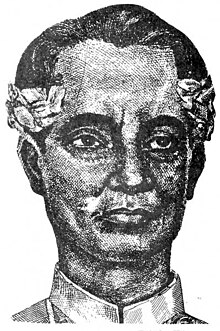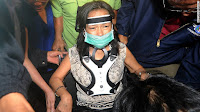Ramon Magsaysay
Ramon Magsaysay was born on August 31, 1907 in Iba, Zambales. His parents were Perfecta del Fierro and Exequiel Magsaysay. Magsaysay studied elementary in Castillejos and his high school at the Zambales Academy, where he graduated salutatorian. He tool up mechanical engineering at the Unviersity of the Philippines. He never finished the course. He transferred to Jose Rizal College and finished Bachelor of Commerce in 1932.
When the Pacific War broke out, Ramon Maysaysay enlisted as a soldier. When the Filipino-American Forces surrendered in 1943, he joined the guerrilla group headed by Colonel Merill. He was appointed as Supply Officer. Being a hard worker, he was promoted to Major. He later became guerrilla leader.
When General MacArthur went to Zambales in 1945, Magsaysay was assigned to guard him. General MacArthur was impressed by his work attitude that he appointed him Military Governor of Zambales.
When the Commonwealth government was reinstated, Maysaysay ran as Congressman of Zambales. He easily won as he was already popular in Zambales.
He was appointed by President Roxas as representative for the Rogers Veteran Bill that directed the US government to take care of the hospitalization and supply of medicine to Filipino Veterans of World War II. He helped in the passage of the bill. This law paved the way for the establishment of the Veterans Memorial Hospital to cater primarily to Filipino Veterans.
From 1948 to 1951, Ramon Magsaysay was in the list of the Ten Most Outstanding Legislators.
He was appointed Secretary of Defense in 1950.
He held dialogues with the rebels and listened to their problems. He promised them a new life. The rebel leaders surrendered and one of them was Luis Taruc who, together with his rebel force in Central Luzon, surrendered to the government with the help of Benigno (Ninoy) Aquino Jr. on May 17, 1959.
The surrender of the rebels increased Ramon Maysaysay's popularity and was attributed as the primary reason for his winning the presidential elections of December 23, 1959.
Works and Contribution of Ramon Magsaysay
He immediately imposed discipline in the government. He even prohibited his relatives to enter government service.
As President, he opened Malacañang Palace to the people. He institutionalized land reform in 1955, thus permitting poor farmers to own land being sold by the government at low prices. He supported the creation of cooperatives giving capital loans to the farmers. He established the Presidential Assistance and Community Development to help barrio workers.
He married Luz Banzon, who hails from Bataan, on July 10, 1933. They had three children.
Ramon Magsaysay died on March 17, 1957, when the airplane, Mt. Pinatubo, crashed into Mt. Manunggal in Cebu, killing all aboard, except one, Nestor Mata, a journalist.



















